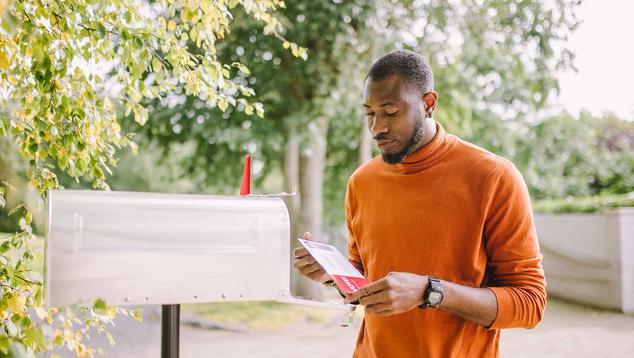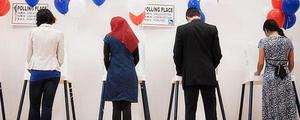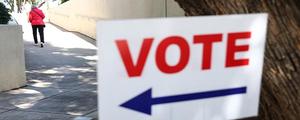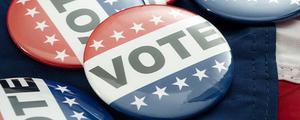Story Highlights
- 41% of registered voters plan to vote early, up from 34% in 2018 midterms
- More than twice as many plan to vote in person than by absentee ballot
- Democrats are more likely than Republicans to vote early
WASHINGTON, D.C. -- Four in 10 U.S. registered voters say they plan to vote before Election Day or have already voted, a higher proportion than in recent midterm elections. Significantly more voters plan to vote before Election Day this year (41%) than did in 2010 (26%), the first time Gallup asked the question in a midterm election year.
The level of planned early voting measured in the Oct. 3-20 poll still does not reach what Gallup measured in the 2020 presidential election year, during the coronavirus pandemic and before COVID-19 vaccines were available. Two years ago, 64% of U.S. registered voters planned to vote early versus 32% who planned to vote on Election Day. It is unclear how much pandemic concerns boosted early voting in 2020 because the practice has historically been more common in presidential than in midterm election years.
Early voting intentions this year, though more prevalent than in the last (2018) midterm election, match those from the 2016 presidential election (40%).
Two-Thirds in West Will Vote Early
Consistent with prior years, Gallup finds early voting is most popular among voters living in the Western U.S., with nearly two-thirds of Western residents, 65%, planning to vote early. Western states have longer histories than other states in extending early voting opportunities, with many allowing voting weeks before Election Day and Oregon conducting its elections entirely by mail. More people in the South (41%) than in the East (28%) and Midwest (28%) intend to vote before Election Day.
In addition to regional differences, the poll finds variation in early voting by age and gender. Senior citizens are more inclined than younger voters to cast their ballot before Election Day, with the majority of voters aged 65 and older planning to vote early. Additionally, women are more likely than men to vote before Election Day.
Emerging Party Differences in Early Voting
More Democrats (54%) than Republicans (32%) say they will vote early -- a 22-percentage-point difference -- with the rate among independents falling in the middle (38%). In past midterm election years, Republicans and Democrats differed little, or not at all, in when they planned to vote.
Gallup did not see party differences in early voting in presidential elections until 2020. That year, President Donald Trump raised questions about the security of mail voting -- the primary early voting option in many states. In Gallup's final estimate of early voting before the 2020 election, there was an 18-point party gap, with 77% of Democrats and 59% of Republicans planning to vote before Election Day.
Less Absentee Voting Than in 2020
The new poll also finds that, regardless of when they plan to vote, 63% of all registered voters plan to vote in person at their local polling place, while 25% plan to vote by absentee ballot and 5% are unsure how they will vote.
Gallup has not asked about voters' planned voting method in prior midterm election years. However, in the 2020 presidential election year, 60% of registered voters planned to vote in person and 35% by absentee ballot. This suggests there will be less voting by mail this year than in the last federal election cycle.
Republicans (75%) are more likely than independents (59%) and Democrats (56%) to say they will vote in person. In turn, 39% of Democrats plan to vote by mail, as do 23% of independents and 18% of Republicans.
Of those voters who plan to vote before Election Day this year, 57% say they will do so by absentee ballot and 36% in person.
Taking into account both when and how voters intend to cast their ballots, the data suggest the following distribution of voting methods this year by people who plan to vote:
- 52% will vote in person on Election Day
- 16% will vote in person before Election Day
- 25% will vote by absentee ballot before Election Day
- 2% will vote by absentee ballot on Election Day, presumably by dropping it off at their precinct location
- 5% are unsure how they will vote
By comparison, in 2020, 31% of registered voters said they planned to vote in person on Election Day, 31% in person before Election Day, 35% by absentee ballot before Election Day, and 1% by absentee ballot on Election Day.
Bottom Line
Although early voting has been less common in midterm elections than in presidential elections, more voters will cast their ballots before Election Day this year than in prior midterm election years. Partisan differences in early voting that were first seen in 2020 persist today, as do party differences in absentee versus in-person voting. Those differences make it possible that some contests will be subject to a "red mirage," as occurred in the 2020 election. If large numbers of mail ballots are cast, which take more time to count and may tilt significantly toward Democratic candidates, it is possible some Republican candidates leading the vote count on election night may end up losing once all ballots are counted.
To stay up to date with the latest Gallup News insights and updates, follow us on Twitter.
Learn more about how the Gallup Poll Social Series works.




